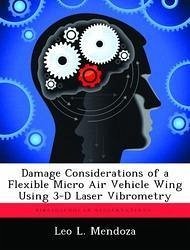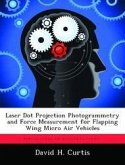In recent years there has been a major push towards a new class of unmanned aerial vehicles: micro air vehicles. A great amount of research has been done towards the aerodynamics, aeroelasticity, construction, and flight characteristics of flexible wing micro air vehicles. However, there has not been much research done regarding possible structural deficiencies of a flexible micro air vehicle wing. The focus of this research is to evaluate the effects of damage on a flexible micro air vehicle wing, particularly its natural frequencies and mode shapes, using three dimensional laser vibrometry. The flexible micro air vehicle wing studied was based on a University of Florida micro air vehicle wing design and was examined using measurements from the Polytec 400-3D Scanning Vibrometer. Comparisons of the wing's natural frequencies and displacements were made between the wing's undamaged and damaged states. This work has been selected by scholars as being culturally important, and is part of the knowledge base of civilization as we know it. This work was reproduced from the original artifact, and remains as true to the original work as possible. Therefore, you will see the original copyright references, library stamps (as most of these works have been housed in our most important libraries around the world), and other notations in the work. This work is in the public domain in the United States of America, and possibly other nations. Within the United States, you may freely copy and distribute this work, as no entity (individual or corporate) has a copyright on the body of the work. As a reproduction of a historical artifact, this work may contain missing or blurred pages, poor pictures, errant marks, etc. Scholars believe, and we concur, that this work is important enough to be preserved, reproduced, and made generally available to the public. We appreciate your support of the preservation process, and thank you for being an important part of keeping this knowledge alive and relevant.
Bitte wählen Sie Ihr Anliegen aus.
Rechnungen
Retourenschein anfordern
Bestellstatus
Storno








